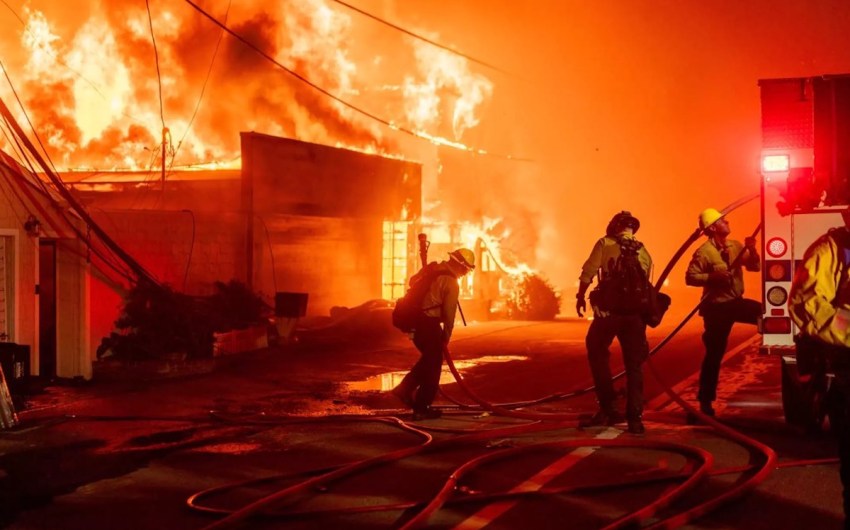Full Belly Files | Food Memories from Our Green and Yellow House
Where I Learned a Lot About Eating and Cooking Well, Santa Barbara–style; Plus, Stories You May Have Missed.
Sign up to get Matt Kettmann’s Full Belly Files, which serves up multiple courses of food & drink coverage every Friday, going off-menu from our regularly published content to deliver tasty nuggets of restaurant, recipe, and refreshment wisdom to your inbox

Right as we drove by, I knew the green and yellow house on Santa Barbara Street just down from East Canon Perdido would soon be ours. The rent was right, the downtown location was perfect, and the clapboard, slightly tippy condition ensured that only recent college graduates with Isla Vista experience and entry-level jobs were going to find comfort in the two-bedroom spread’s general state of disrepair.
Ever since move-in day — April 4, 2000, to be specific — I’ve been working on a coming-of-age memoir about my seven years of living there, as long as you consider “working” to be living there until 2007 and, ever since, thinking about what it all meant. Those would become the relatively halcyon days at the beginning of my adult life, when what is now started to crystallize atop a $7 per hour proofreader’s wage, scrappy freelance assignments, and the realization that constant hustling would be the only way to make writing, primarily by means of journalism, a viable career.
I’ve pondered almost constantly how best to plot such a book, whether to stick to the utmost truth, or to veer into a fictionalized storyline, which would protect the guilty and more easily grant a coherent narrative. I’ve wondered how to sensitively recount loves found and lost and found, how to handle certain less savory characters who passed through our lives, or even how to present the less-than-legal things that our protagonists were occasionally up to back then.

But there’s at least three things I settled on long ago. The first is that the title will one day be The Green and Yellow House. As in, “We live in that green and yellow house on Santa Barbara Street, right across from Thrasher Books and Our Daily Bread,” or, a bit later, “across from C’est Cheese,” or, if referencing today, just “the cheese shop.”
The second is that an early, accurate scene must be of me pulling out a typewriter that I’d just purchased from a thrift store and setting it up to work on my new porch, where the traffic buzzed by and colorful lives carried about, mostly unaware of our presence. I spooled in my first sheet of paper and typed just a few lines when the ink ran out. I still have the typewriter, and it still has no ink.


[Click to enlarge]: From left: A scene from poker night in the backyard; A massive palm tree still stands in front of the home.
The third is that what and how we ate will be a recurrent theme of the tale. I don’t think we realized it at the time, but our weekly trips to the Santa Barbara Farmers Market just down the street every Saturday laid the groundwork for appreciating homemade, farm-to-table cuisine before the phrase became a mandatory mention by every self-respecting chef. Those shopping trips fueled the barbecues we hosted on a regular basis, often on those Saturday nights just hours after the market, but also the ones that preceded our Wednesday poker nights and on random weekday nights with whatever friends and neighbors were around.
Our cooking techniques were untrained and unrefined, but the fresh ingredients didn’t require much. We frequently bought mussels from the Santa Barbara Channel — in the earlier days, plucked off oil rigs by the defunct company Ecomar, but then as Ecomar employee Bernard Friedman was launching his Santa Barbara Mariculture company. We’d steam them in pots with herbs, butter, garlic, and white wine, perfect for dipping (occasionally pilfered) loaves from Our Daily Bread, or, as one neighbor preferred to do, meticulously grill the mussels one-by-one with buttery sauce drizzled into each shell.

Our veggies and fruits were utterly fresh, so the squash and asparagus would only need oil, seasoning, and a flash on the grill. Potatoes, pepper, and onions just needed to be wrapped in foil and tossed on the grill. And since I was particularly fond of a cute stonefruit dealer, I’d constantly buy peaches off of her, though never take that crush any further.
Our meat skills were carried over from Isla Vista’s keg-lined grilling grounds. I would crush an insane amount of garlic, spice, and peppers into store-bought barbecue and teriyaki sauces, and let tri-tips marinate for days. Then we’d grill them with the fat caps up — most fat caps appear to be removed these days — and stack the sliced, charred meat atop tortillas. (I’ve been craving one of those oversauced hunks of beef as of late.) Mexican influences were mighty, largely because many of us were raised in
California, but also because one of our neighbors was from Guadalajara. He brought artisan tequila and mezcal to what was mostly a post-college beer scene, often featuring homebrews from our kitchen. When his would-be wife arrived a couple years later, she used soya for enchiladas and showed us how to see other culture’s cuisines through a Mexican lens.
Wine slowly seeped into the scene thanks to the proliferation of tasting rooms in the Santa Ynez Valley. Most of them didn’t charge for tastings back then, so we’d frequent them on weekends, because why not get drunk for free when you’re in your early twenties? I recall opening the old Lazy Acres mailers on my porch, and seeing Bob Wesley’s missives about this bottle and that one, all with intriguing backstories about their people and places. Those scribblings opened my eyes to the reality that wine is more than a beverage, and we can see how that turned out.

We eventually got a tiny bit more gourmet, influenced from the meals that we’d somehow pay for at finer establishments, or from when our parents were in town, or from when I started writing more about the Santa Barbara food scene. I recall one day drizzling mango-lime-jalapeno juice on scallops served atop radicchio leaves to impress a date, though the idea was tastier than the bite.
Restaurants were a steady part of our menu as well. Just around the corner, Sojourner Café’s “Low Rent Special” — soup, salad, roll — was a common choice for just $9, and I’d often buy a scoop of chicken salad and ciabatta from Our Daily Bread across the street, a stomach-filling hack for lunch. I swore by the pork noodle soup and tea smoked chicken at Jimmy’s Oriental Gardens, and Restaurant Roy’s full steak dinner was less than $20 back then when we wanted to splurge.
The corner spot, which would eventually evolve into Justin and Emma West’s game-changing Julienne and is now Rudy’s Fresh Mexican, was a revolving door, from Main Squeeze to Dish to Le Bon Café, where we loved the saucy banh mi. When the woman who’d become my wife started working tasting shifts at C’est Cheese when that shop opened, sometimes my dinner was smuggled plates of fine fromage from around the world.
These are just a smattering of the memories from off the top of my head while on my Wednesday morning on deadline. More will certainly come, and one day, you’ll find them served up on the pages of The Green and Yellow House. Stay tuned.
From Our Table

Here are some stories you may have missed:
- George Yatchisin reports on Seven Bar’s new location.
- Leslie Dinaberg reports from a barbecue dinner honoring Fess Parker.
- George hunt out a El Encanto with Alice Waters.
- Jamie Knee reports on the toasting of Frank Ositini and Gray Hartley during the Sta. Rita Hills Wine & Fire event.
- An Edgar Allan Poe drinking party is coming to town.
- TV chef Steven Raichlen is teaching barbecue at Alisal Ranch.









You must be logged in to post a comment.